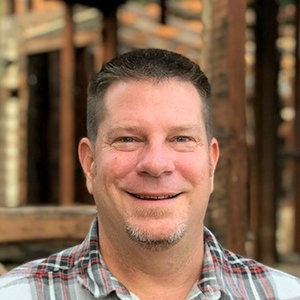What are you and your company doing to help reduce embodied carbon emissions?
Bonnie Frye Hemphill
Director of Policy & Partnerships at UMC Inc.; Board member, NW Energy Coalition and the Clean Energy Transition Institute
I’ve been working full-time for climate solutions for 20 years now. But I’m in it for the people more than for the polar bears – for the people fleeing fire, flood, famine, and forced migration – by advocating for the hard-working people building a cleaner economy. My colleagues at UMC are proud to be part of building better. In my role as Director of Policy and Partnerships, I keep us connected with policy leaders and with thought-leading organizations, including the Carbon Leadership Forum.
UMC has logged 102 years of mechanical, energy, and industrial expertise streamlining resource use and curbing emissions for the Northwest’s built environment. Of thousands, here are just a few projects to be proud of:
- Our retrofit work for Olympia’s Old Capitol Building cut carbon emissions with cleaner infrastructure.
- Our state-of-the-art mechanical expertise for the Seattle Cancer Care Alliance keeps their systems running smoothly, affordably, and flawlessly clean to care for critically immune-compromised patients.
- Our highly efficient MEP systems for Nucor Steel have helped them to lead nationally in decarbonizing heavy industry.
Customers call UMC because our work uses energy and materials efficiently for the “hearts and lungs” of their commercial-scale buildings. So it’s only natural that we double down on tracking and cutting the embodied carbon in the mechanical systems we offer. We’re glad to be in good company through the Carbon Leadership Forum’s MEP 2040 Challenge, and proud to be its first mechanical contractor signatory.

Bonnie Frye Hemphill
“Customers call UMC because our work uses energy and materials efficiently for the “hearts and lungs” of their commercial-scale buildings. So it’s only natural that we double down on tracking and cutting the embodied carbon in the mechanical systems we offer.”
What are you and your organization doing to help reduce embodied carbon emissions?
Shawn Wood
Construction Waste Specialist, City of Portland Bureau of Planning and Sustainability
I grew up in the foothills of the Blue Ridge Mountains of Virginia. It’s a beautiful area dotted with small towns, farms, and natural areas. I spent a lot of time camping and hiking near the Blue Ridge Parkway – a 469-mile-long route that spans mountainous areas of Virginia and North Carolina. It was in these areas that I developed an affinity for nature, and I still love being surrounded by it. I also have a special love of wood as a material and from as far back as I can remember I was building crazy things out of scrap wood from my dad’s workshop.
I first became interested in green building/design in high school. Our local high school was built during the oil crisis of the 1970s and was oriented to the south with a sawtooth roof that would allow for future solar panels. The panels never came, but the idea of making something ready and adaptable for the future stuck with me. After high school I was sure I wanted to be an architect and design houses that worked with nature. I attended the College of Arts. Architecture, and Design at Virginia Tech, but was drawn to landscape architecture, and I ultimately graduated with a degree in urban planning. Looking back, I would take the same path because it exposed me to numerous facets of planning, natural systems, design, and construction.
Today I’m fortunate to work as a Construction Waste Specialist for an organization that is actively working to address the pressing threats of climate change. My work has focused primarily on building deconstruction/salvage and material reuse. I have overseen Portland’s groundbreaking deconstruction policy efforts that ultimately resulted in a first-in-the-nation deconstruction requirements for how to remove any house built pre-1941. Over 500 houses have been deconstructed under the requirements and these projects generate tons of salvaged old-growth lumber that is ready for its next life as a low-carbon building material. Deconstruction is part of our city’s strategy to reduce embodied carbon in the built environment. However, it is only one strategy and we’re currently on a path to develop a comprehensive embodied carbon policy for the city.

Shawn Wood
“I have overseen Portland’s groundbreaking deconstruction policy efforts that ultimately resulted in a first-in-the-nation deconstruction requirements for how to remove any house built pre-1941. Over 500 houses have been deconstructed under the requirements and these projects generate tons of salvaged old-growth lumber that is ready for its next life as a low-carbon building material.”
What are you and your company doing to help reduce embodied carbon emissions?
Flavio de Stéfano
Latin America Business Development and Strategic Marketing Director for Interface/Interlatam
I recently became a father of a 3-year-old and a 1-year-old, and before their arrival, my wife and I wanted to start a family, but I questioned if it was responsible for us to bring these beautiful beings into the world knowing the current condition of the planet and how global warming was threatening the future of humanity.
My story goes back to 2014, when fed up with the pollution and traffic in Mexico City I decided to use the bicycle more frequently and leave my car aside. Just in the middle of that process, destiny put Interface on my path and I became fascinated with the company’s sustainability mission. Ray Anderson‘s vision inspired me, and I became a little more educated on the subject, changed my lifestyle and managed to at least be more aware of the carbon footprint that I was producing. I wanted to do more, so I became an ambassador for the company on sustainability issues and tried spreading Ray’s message and vision all over Latin America. I hoped that this will help my kids to live in a better world.
Interface has been the first and only flooring manufacturer to receive a third-party carbon-neutral corporate certification. Moreover, Interface has neutralized carbon emissions across its entire business, including all operations and the whole value chain, and is on track by 2040 to become a carbon-negative company.
Nowadays my job, hand in hand with the CLF, is to bring the message of the importance of embodied carbon in building specifications in the Latin American region, which has historically lagged on the subject. I am very passionate about helping my clients understand more about the concept of embodied carbon and how they can shift to have a positive impact on the planet and help reverse climate change. It is very gratifying after one of my talk’s to see the astonished faces of my clients. It is even more gratifying to see how a few months later they have carried this message and applied it in their organizations. Sustainable, low-carbon workspaces can make a big difference!
As Ray Anderson was famous for saying: “We have a choice to make during our brief visit to this beautiful blue and green living planet: to hurt it or to help it.”
So let’s choose Ray’s side!

Flavio de Stefano
“My story goes back to 2014, when fed up with the pollution and traffic in Mexico City I decided to use the bicycle more frequently and leave my car aside, just in the middle of that process destiny put Interface on my path and I became fascinated with its sustainability mission.”
What are you and your company doing to help reduce embodied carbon emissions?
Kjell Anderson
Principal & Director of Sustainable Design, LMN Architects; Fellow, American Institute of Architects
Entering architecture 25 years ago, sustainability appeared to me as the most important missing tool in the architecture toolkit, and aligned with the backpacking mantra of leaving a place better than you found it. We still don’t have sustainable buildings at scale, but there is more momentum today that I’ve ever seen, from local to national and international action, especially around climate change.
The first two decades of my career were increasingly spent learning and using energy modeling to improve energy performance, including writing a book on the subject. With CLF lighting the way, I and many other architects woke up last decade to the impact we have with our materials choices as well. In fact, architects are more directly able to control embodied carbon than energy performance since we specify and coordinate nearly all materials on a project. To expand this community, in 2019 I organized the first CLF-Seattle hub meeting with over 60 people (in person!), which has now grown into an online monthly meeting with a YouTube channel.
In addition to engaging early energy modeling on every project, we have now calculated and reduced embodied carbon on nearly every project since 2019, led by Justin Schwartzhoff and assisted by the CLF community. The farther into carbon we dug, the more we found: up to 50% of the total emissions on our buildings were not included in typical calculations. To address this, we are writing a Path To Zero Carbon online series, interviewing experts and using our project knowledge to summarize the areas and strategies needed to realize carbon neutral buildings. We’re also addressing materials reuse – on a recent project (soon to be published) we tracked every existing and new material, bringing the carbon impact and fate of each as a data point for owner decision-making. This led to creatively avoiding the landfill through donations, on-site reuse, as well as procuring salvaged materials. While a typical remodel using low-carbon materials would have reduced emissions by 22%, our strategies reduced the impact by 67%.

Kjell Anderson
“We still don’t have sustainable buildings at scale, but there is more momentum today that I’ve ever seen, from local to national and international action, especially around climate change.”







